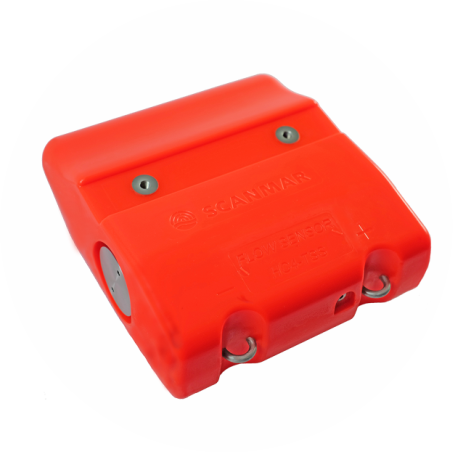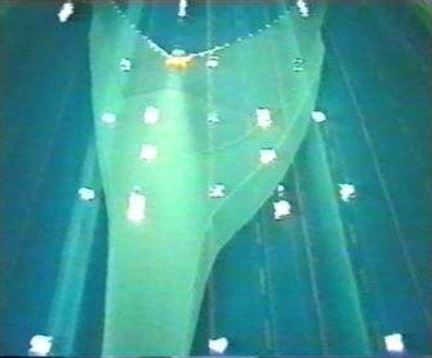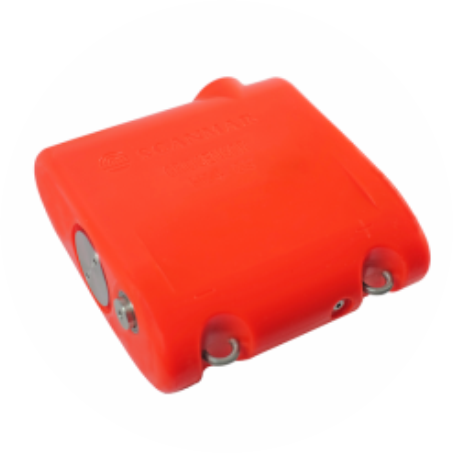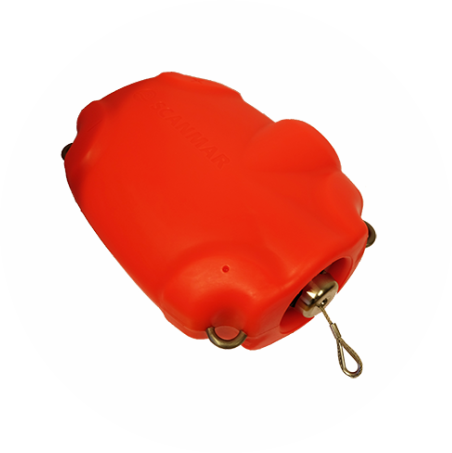ScanTrack – New patent pending system for full catch control and simple rigging of trawl
After more than 30 years of groundbreaking efforts on research and development, Scanmar can now offer Catch Systems based on the world's most advanced technology.
Scanmar’s extensive range of sensors and advanced technology for processing of data has now enabled us to develop a n ew product that allows fishermen to anticipate problems that may arise and simply avoid them. In addition, the system shows how he can easily adjust rigging to get an optimal effect of the equipment.
Scanmars products are based on proprietary moldin g technology , unique battery - and charg ing technology and reliable cable - free transmi ssion technology that work in all conditions. Scanmar has also developed technology to ensure accurate and reliable measurement data, for example temperatur e compensation for speed of sound in water so that depths and distances measured by e cho sounder s and D oor Distance s ensor s are correct.
When it is necessary to make correct decisions quickly in critical situations and there are many factors that come into play, it is a requirement that all data is 100% reliable and that data update rate is optimal.
Finally, we possess the required technology and we have therefore chosen to develop a system that gives the fisherman a complete presentation where it is easy to understand what is happening: ScanTrack.
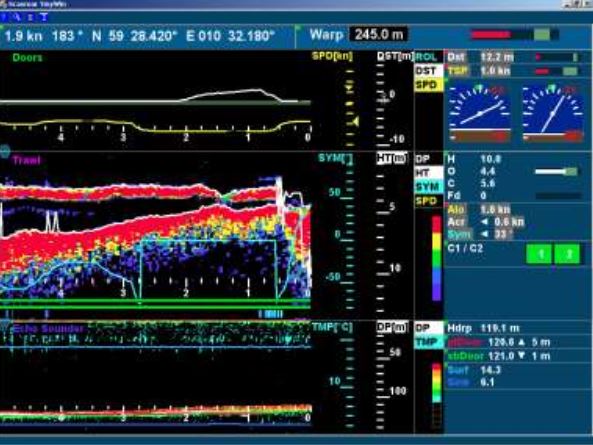
ScanTrack is an additional unit to the existing Scanmar b ridge units that can be connected to most of Scanmar’s previously produced systems , limited to how many s ensor s the bridge system can handle.
In all simplicity, the system records all data from all sensors connected to the system, including data from other sources than Scanmar. The fisherman enters the data he considers to be "correct" from the given situation, and deviations in the actual data will be displayed as deviations from a straight line.
Let’s have a closer look at the benefits the system provides:
1. Fast decisions while fishing to avoid problems
- In a given catch situation , it is natural to focus on the three or even four types of information that have the greatest impact on the trawl efficiency in every situation.
- Trawl geometry is an example of something that concerns most people. Door d istance is mainly a result of the doors ’ pitch angle s and towing speed (flow in the trawl opening). When a desired value is selected (done with simple clicks on the screen in terms of sensor selec tion and setting), the image on the screen will be a thick straight line showing the d oor d istance if real values are the same as the chose n . The other measurement values are hidden.
- If the d oor d istance deviates from the selected value, the thick lin e points upwards or downwards , depending on whether it is the spread or if you have too little door distance ( t he deviation is also shown with the digit). At the same time, this or other factors that influence the door distance will show a similar d eviation . By correcting these, particularly the greatest deviation, you will easily be able to correct the situation.
- If the door distance changes without any change in the selected parameters, you can check other parameters – those that may have not been displayed in ScanTrack , such as warp lengths – t o examine other possible causes .
- In ScanTrack you put in a filter (si mple click s on the screen) that makes "natural" variations invisible . If you fish in an area where one would expect that the doors are very stable (small S can Factor ) you can for example add a filter of ± 2 ⁰ . However, if the seabed is very uneven, it may be natural to select ± 6 – 8 ⁰ .
- For d oor d istance it may be appropriate to select ± 1 m eter on a smooth seabed , while under more difficult conditions it may be natural to select ± 3 meters. Note: Temperature compensated distance measurements provide a much more accurate reading than usual distance measurements where inaccuracy can be up to ± 3%.
- In the same way as it is often desirable to focus on correct door distance, it may be important to focus on the height of the trawl, bottom contact, trawl speed, flow in the tunnel, etc. You choose when to observe the factors you believe have the gr eatest impact on the parameter you want to focus on.
- If you want to change the set parameters while fishing, this can easily be done with simple clicks on the screen. Examples of situations where you wish to change the setting may be that you are fishing at a different depth, that there is a change in the current conditions, filling of the bag, etc.
- Similarly, you can choose to replace the sensors (parameters) you want to keep an eye on by simple click s on the screen.
- Since all data is there all the time, you can also click to see the history or retrieve the individual sensors .
2. Evaluate a finished haul with re gards to if the rigging should be adjusted
- In all logging programs you can go back to study t he developmen t of the individual parameters and also discover whether there have been some short - term deviations. With the logging of many sensors, it is not easy to get a complete overview because of the amount of data.
- With ScanTrack the advantage is that you can easily study the interplay between the parameters that affect each other. To refer to the example above, there may be other factors than door angles and towing speed that has affected the door distance (and efficiency). These can include warp lengths (depths), side currents (trawl symmetry), filling, etc. It is often useful to make small adjustments that lead to the most efficient rigging throughout the haul.
3. Historical data as a basis for future trips
In ScanTrack you can store large amounts of data, making it easy to retrieve any data from earlier haul s in the same place, and see what experiences you have previously made.
We have shown and discussed ScanTrack with many people and without exception they are very positi ve about how the system will make everything much easier for them.



